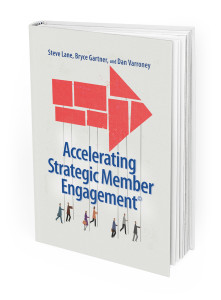 How One Association Achieved 40% Membership Growth. As Associations continue their struggle to find their membership growth sweet spot, other organizations are discovering a durable path to growth. A case and point is The American Occupational Therapy Association (www.aota.org/) where Fred Somers, their Executive Director, proudly reports 40% cumulative growth. While the numbers are impressive, their heightened focus on member value and constant innovation is equally impressive.
How One Association Achieved 40% Membership Growth. As Associations continue their struggle to find their membership growth sweet spot, other organizations are discovering a durable path to growth. A case and point is The American Occupational Therapy Association (www.aota.org/) where Fred Somers, their Executive Director, proudly reports 40% cumulative growth. While the numbers are impressive, their heightened focus on member value and constant innovation is equally impressive.
Up at Night Issues
From the outset, it’s Somers understanding and forward vision that’s shows how closely AOTA’s member challenges are reflected in their impressive suite of products and services. Serving and representing a dynamic critically important profession, it’s member resources, including it’s newly launched website, display how closely connected to their member’s up at night issues the Association is.
Defied Gravity
With the Association celebrating its centennial year in 2017, the Board of Directors provided a detailed vision of the where the Occupational Therapy professional was heading. The vision galvanized the profession and motivated AOTA’s senior management team to reposition its value proposition and heighten its relevance inside the profession.
While modernizing their member acquisition tactics was important, it was astute strategies and strong execution which helped AOTA defy gravity and accelerate membership growth.
1. Re engaging the Academic Community – Motivated students and professionals entering the profession to see AOTA as a critical resource provide education and continuing education.
2. Bringing younger professionals into the leadership pipeline – Attracted more Occupational Therapy professionals to membership at earlier career stages.
3. Establishing National Partnership Projects with Larger Employers – Delivering customized value to this segment and quickly demonstrated higher ROI (return on investment).
Retention and Member Engagement Opportunities
Despite remarkable membership growth, AOTA’s Somers readily acknowledges that success is a journey so much more than it is a destination. Although the Association achieves approximately 85% membership retention, AOTA and Somers are utilizing data to determine improvement opportunities:
How One Association Achieved 40% Membership Growth
Fluidity, flexibility and ongoing product and service innovations must be data driven in order to achieve large scale membership growth. AOTA’s member growth success reinforces how data, when employed effectively, helps Associations develop products and services that members need in order to be successful in their profession.
As discretionary member dollars become less available, Association memberships will continually face heightened scrutiny. Both Fred Somers and AOTA provide more than a beacon of hope. Rather they provide a successful business model that could be applied and help other Associations satisfy their members and grow their memberships.
For a free copy of the “Accelerating Strategic Member Engagement” eBook, request your copy at www.potomaccore.com.




